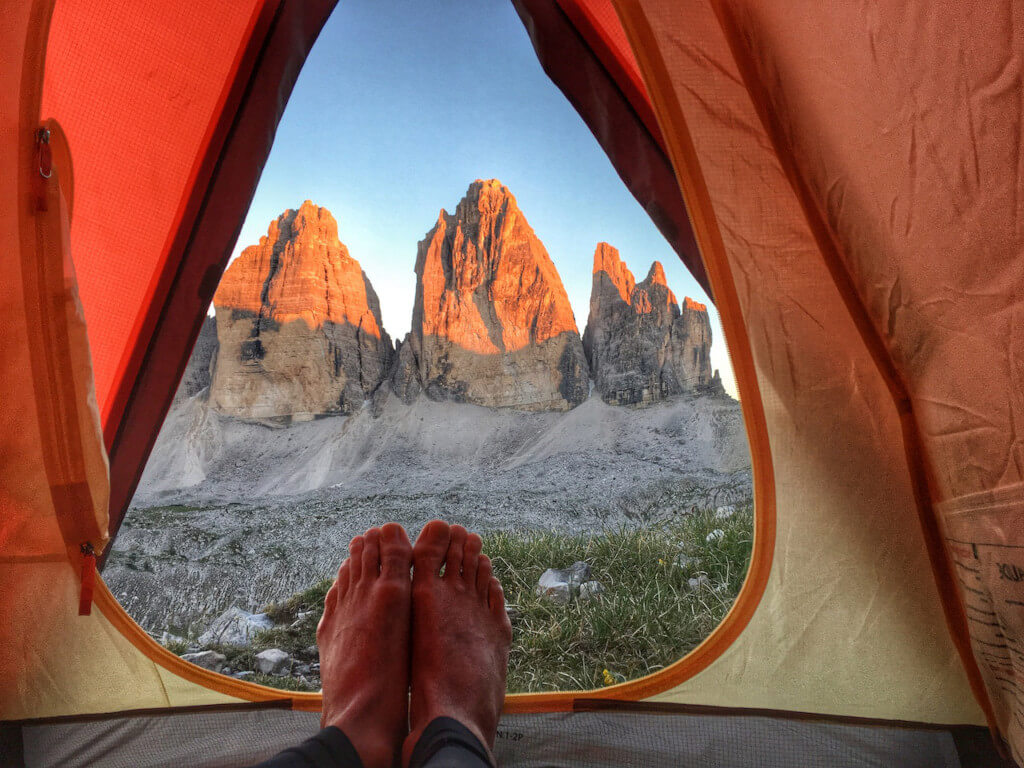Camping Vacations Are a Favorite Pastime for South Africans
Following in the footsteps of rugby and braaing, it has almost reached the status of a national religion. As a consequence, selling tents should not be too difficult, right? Sadly, this is not the case.
One of the difficulties stems from the fact that there is such a diverse selection of brands and models on the market. Tents are cumbersome products, and as a result, it is significantly more challenging to showcase them than it is to showcase other types of camping gear, such as gas stoves or headlamps. Renting out additional square footage is one of your options. The great news is that in addition to these, some alternatives are less expensive.
In-Store Presentation
When we were conducting research for this article, we spoke with a variety of people, and they all shared the opinion that the best method for selling a tent is to have it set up inside the store. According to André Naude, who works for Bushtec, “a tent that’s still bagged is more difficult to sell.” “There’s no doubt that retail stores who pitch tents are the ones who sell the most tents,” says Simon Larsen, who works for RAM Mountaineering. The issue with this, however, and this has been brought up before, is that set-up tents take up a significant amount of floor space.
If space is tight, you can get away with establishing a “camping scenario” in a central display area, according to Alexi Prodromou of Seagull Industries, a provider of Oztrail tents and camping gear. He recommends that you begin by erecting a gazebo that is three meters by three meters in size. Underneath this, erect a tent large enough to accommodate four people, and then finish the impression by bringing in additional elements like stretcher beds and folding chairs. Even though it occupies only nine square meters of floor space, this arrangement brings immediate awareness to the fact that you market tents.
There are additional methods available for displaying tents that do not require taking up valuable space on the shop floor. Suspending them from the ceiling or even the walls, in an inverted position, is an option that Prodromou recommends. The point is that even if you have a limited amount of floor space, there are still techniques to make your clients aware that you stock tents, which should result in more sales. Yes, this may involve quite a bit of physical training — and one or two fishing reels.
Maintain Organization
No matter which option you choose, it is essential that the tent (or tents) be set up in an organized manner. According to André Naude, “First Impressions Matter, so Make It Look Good,” so make sure it does. Tents that have the appearance of being lopsided or untidy should not be used. He recommends making use of weights or sandbags in order to maintain the tension in the guylines.
Think about pitching them alone without a flysheet as an option as well. Not only do they have a tidier appearance, but also the customer is able to see the pole structure, which is particularly crucial when it comes to purchasing tents with a higher level of technical sophistication. Utilizing a tent stand is a tidy and space-saving substitute that can be utilized in situations in which it is not possible to set up a tent.
RAM Mountaineering is an example of a provider that makes these options available to their clientele. Even though the tents are showcased on the shelves folded up (i.e. in the bag), there are posters on each side of the stand that show images of each prototype pitched, in addition to valuable information and specifications. The result is that you will be able to successfully exhibit a large number of tents while simultaneously reducing the amount of clutter.
Be Knowledgeable About Your Products
To win a customer over completely, you must first capture their attention. It is also vitally important that you can follow through by assisting them in selecting the appropriate tent. In turn, this requires two things: the ability to ask the appropriate questions, as well as having the appropriate product information readily accessible.
The Second Option Should Not Be Too Complex
The vast majority of suppliers make available, in the form of brochures or posters, product selection details. These can be utilized to demonstrate to the customer important specifications regarding the tent, such as its size, weight, and material, as well as compare different models to determine which one meets their requirements most effectively. Banners should be stuck on the wall that is nearest to your exhibit; optionally, spec sheets can be directly attached to the tent. Having this information close at hand is beneficial, and it makes sense to keep it that way.
“It is essential that you are aware of the details. According to Geoff Ward, who works for Outward Ventures and is one of the local agents for MSR, “The repercussions of selling someone the incorrect tent could be serious, and possibly even devastating.”
It is crucial to be upfront with the consumer rather than make assumptions about their needs in the event that information on the tent is not accessible for whatever reason. This is of utmost importance when it comes to the marketing of products that are intended for use in harsh environments, such as those that are created for mountaineering and climbing. According to Naude, it is preferable to inform the client that you do not know the answer but that you will look into it and get back to them.
Ask Questions
The kinds of questions you ask will, of course, differ somewhat according to the kinds of tents you sell; for example, if you sell traditional safari dome tents as opposed to high-performance tents for climbing Mount Everest, your questions will be different. The following, however, are some good guidelines to follow as a general rule:
For what purpose do you intend to make use of it? Always make it your priority to find out what sorts of activities the customer intends to use their tent for. This ought to be your first port of call. Camping is the obvious choice to make in this case.
However, as the adage goes, “the devil is in the details,” so make sure to investigate a little more and find out where they intend to use it. When is it in the year? Who exactly is going to make use of it? If the answer is family vacations on the South Coast of Natal, for instance, then you ought to direct them to a tent with ample living space, maybe even different rooms for parents and children to stay in.
If the answer is trekking in the Cederberg, then space will be less important than other considerations, such as the weight of the tent and the ease with which it can be divided up into different portions (so the weight can be split between two or three people). The key to success here is to accurately determine what the customers ’ requirements are, then to provide them with the tent that is the greatest match from your selection, and finally to hopefully make the sale.
What About Nylon or Canvas?
The inquiry that was just presented will also direct you in the direction of the kind of material that you should recommend. Tents made of canvas are extremely sturdy and long lasting, making them an excellent option for use in more rugged environments such as South Africa’s national parks.
However, they are a challenge to set up due to the fact that the fabric is heavy and bulky. Because of this, they are not recommended for “short stay” vacations, such as weekends or road trips, because the customer will have to break down and re-set up camp daily during these types of getaways. The alternative to canvas is nylon (or polyester), which is more lightweight but is not as long-lasting as a canvas.
When it comes to car camping, the general rule of thumb is to use canvas tents for longer vacations and nylon tents for shorter stays. Because of its lightweight, nylon is the only material that can be used for tents when participating in activities such as backpacking, hiking, cycling, or any other activity in which the tent will be carried in a backpack.
What is the Maximum Capacity of Those Seats?
Tents are categorized into different sizes based on the number of people that can fit inside of them; for instance, a two-person tent, a three-person tent, and so on.
Customers who plan to camp in their cars have more options here given that the amount of weight and space taken up by their gear is not as much of a concern (because the tent is carted in a boot). In this particular situation, you might want to recommend that they purchase one size larger than they need — for example, a couple can take a tent that sleeps three people — in order to have some additional space inside the tent for their luggage and other items of gear.
On the other hand, a motorcyclist who is traveling through Namibia on their own will need the most compact and lightweight single-person tent that is currently available. Again, directing the customer to the appropriate tent is one of the most important factors in closing the deal.
Let’s Get Technical
When it comes to purchasing a tent, the average Joe Soap is not going to be overly enthusiastic about all of the finer technical aspects. In point of fact, it may be prudent to avoid these (unless asked to do so) — inundating him with an excessive amount of information and figures could just cause the issue to become more confusing.
However, consumers who wish to purchase a tent for more intense camping, such as trekking or mountaineering, will typically anticipate that you will be able to have a high degree of product knowledge. These customers can be identified by the fact that they are interested in purchasing a tent. And there’s a good reason for that. Not only will their choice of tent affect the outcome of their journey, but high-performance tents are also significantly more expensive than standard tents. As a result, it is essential to be able to communicate all of the advantages of high-performance tents to the client so that they feel as though they are getting good value for their money.
Therefore, What are the Most Important Technical Specifics That Need to Be Discussed?
Because weight, or the absence of it, is typically a major selling point, you should direct their attention to particular technologies that reduce kilograms, such as the utilization of lightweight fabrics.
In addition to this, strength is extremely important, specifically the tent’s capacity to withstand extremely strong winds. At this point, you should concentrate on the pole arrangement (the structure), referring that the strength of the tent increases in proportion to the number of pole intersections that are present. Finally, high-end tent producers have a reputation for providing excellent customer service, so it is important to point out that in the event that the customer’s tent becomes damaged, they will be able to have it repaired or substituted by the manufacturer.
One Last Thing to Consider: Tack-on Sales
When selling tents, it is important to keep in mind that there are numerous opportunities for selling add-ons. Many vendors offer additional groundsheets, which are also sometimes referred to as “footprints.” These groundsheets are intended to be placed underneath the tent, where they will protect the base and lengthen the tent’s life expectancy. Nikwax Tent and Gear SolarProof is yet another product that will stretch the lifespan of the tent. It is a spray-on remedy that safeguards the flysheet from damage caused by ultraviolet light. Add-a-rooms are essentially an extension to the primary tent that can be utilized to accommodate extra people or equipment. Some manufacturers, such as MSR, offer these as an option for customers who require additional space in their tents.





